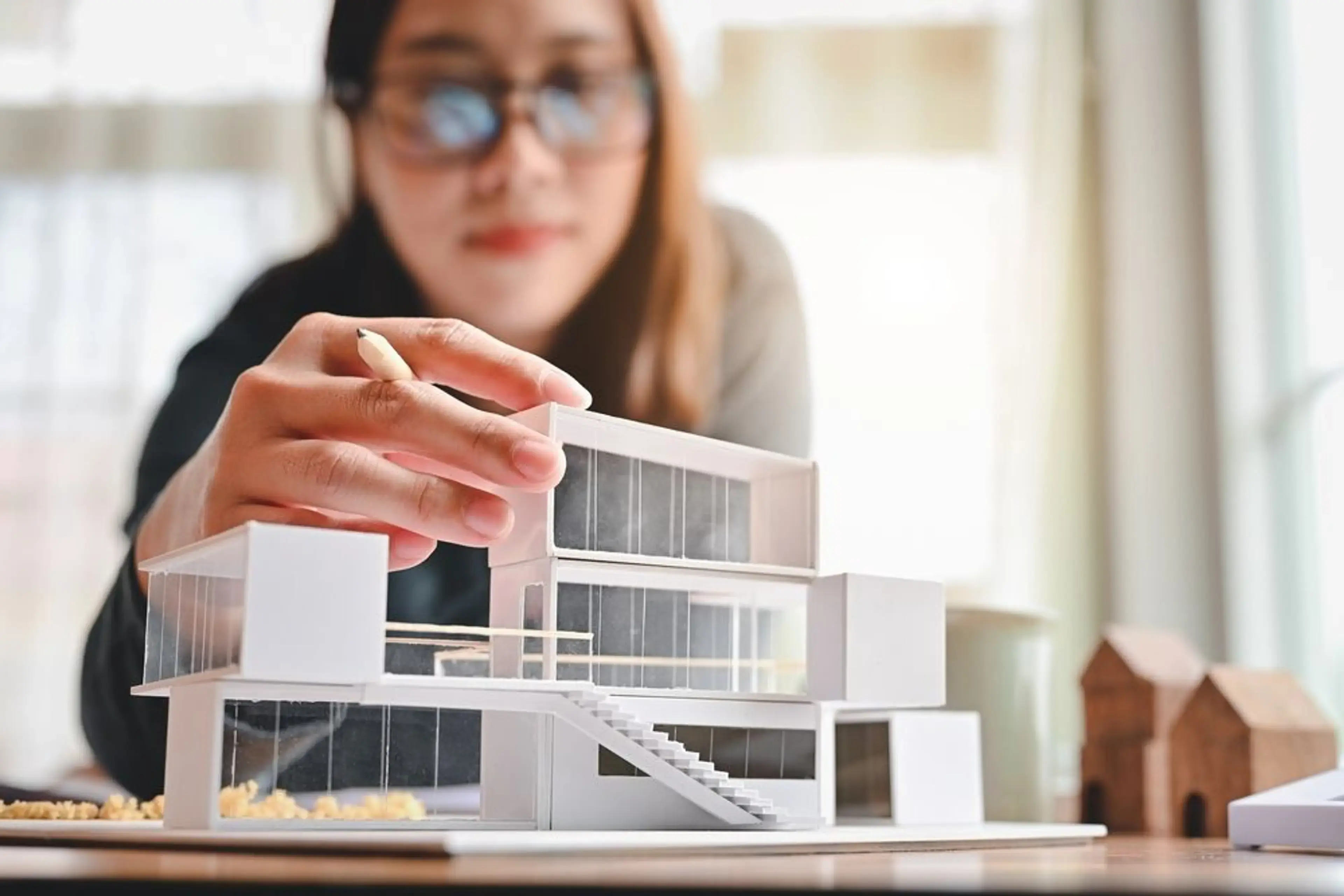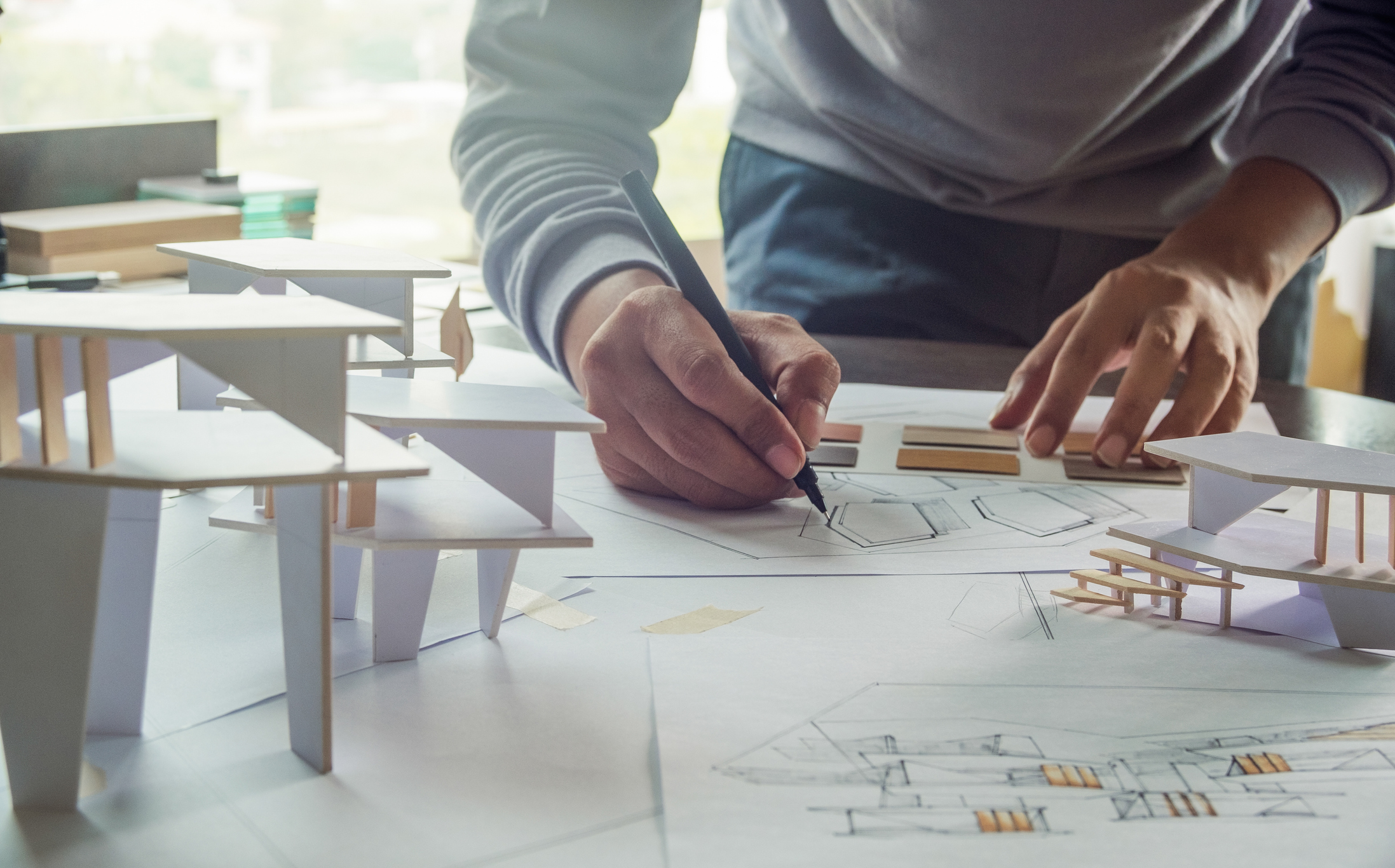Architect Hiring Guide for Clients and Investors
Architect Hiring Guide for Clients and Investors
Blog Article
Understanding the Diverse Occupation Paths Available for Aspiring Architect
As an ambitious Architect, you have a globe of occupation courses waiting for you. Each path uses distinct difficulties and chances to apply your creative thinking and technological expertise. Whether you're drawn to typical style or the subtleties of sustainable design, there's a specific niche that aligns with your passions. Recognizing these varied options can form your expert trip, yet which direction will you select to check out first?
Typical Style: Creating Frameworks and buildings
Typical architecture focuses on developing buildings and frameworks that mix capability with aesthetic appeal. Your designs can show social heritage, showcasing regional traditions while fulfilling modern needs.
You'll establish abilities in preparing, model-making, and website analysis, allowing you to envision and connect your concepts effectively. Engaging with customers, you'll need to comprehend their vision and convert it into possible layouts.
Furthermore, constructing codes and sustainability techniques are crucial in your work, guaranteeing your frameworks are safe and environmentally pleasant. As you expand in your occupation, you'll locate opportunities in domestic, business, and even remediation tasks, each offering distinct difficulties. Welcoming standard style leads the way for a meeting occupation that admires the past while forming the future.
Urban Preparation: Shaping Communities and Public Spaces
As an aspiring Architect, you can play an essential function as a city organizer, transforming exactly how neighborhoods communicate and work. By using community involvement methods, you'll assure that residents have a voice fit their setting. Plus, integrating lasting design concepts will certainly help produce areas that not only fulfill today's requirements however additionally protect the future.
Role of Urban Planners
While lots of might consider architects as the single visionaries behind buildings, metropolitan planners play a necessary duty in shaping the broader landscape of areas and public rooms. They examine land usage, zoning laws, and area needs to develop sustainable atmospheres that improve quality of life. By teaming up with numerous stakeholders, you'll help design parks, transportation systems, and suburbs that promote social interaction and availability. Urban coordinators also concentrate on ecological considerations, ensuring that growths incorporate green areas and support biodiversity. Your proficiency in spatial design and area characteristics permits you to imagine future development while preserving cultural heritage. In this crucial function, you'll directly influence how individuals experience their environments, making every task an opportunity for favorable modification.
Area Interaction Techniques
Effective neighborhood interaction methods are essential for urban organizers to assure that the voices of homeowners are heard and valued in the planning process. To cultivate purposeful dialogue, you should prioritize open online forums and workshops where area participants can share their ideas and problems. Use studies and social media to get to a wider audience, making sure varied perspectives are included. Teaming up with regional companies can boost count on and help with deeper connections. It's vital to offer clear details about proposed jobs and decision-making procedures, enabling locals to feel educated and equipped. By actively integrating and paying attention comments, you'll develop areas that mirror the community's demands, inevitably causing more sustainable and successful city atmospheres. Embrace transparency and continuous dialogue for long lasting impact.
Lasting Design Concepts
When developing city spaces, incorporating lasting design principles is essential for producing atmospheres that thrive both ecologically and socially. Consider integrating eco-friendly areas, like parks and yards, to enhance biodiversity and boost air quality.
Designing with water conservation in mind is also essential-- assume concerning rainfall yards and absorptive surfaces to handle stormwater. Entailing neighborhood participants during the preparation process guarantees that the areas you produce satisfy their demands and motivate social interaction. By accepting these concepts, you'll contribute to lively, sustainable metropolitan landscapes that profit everybody.

Landscape Design: Creating Sustainable Exterior Environments
As you explore landscape architecture, you'll uncover necessary design concepts that create gorgeous and functional exterior areas. Sustainable methods play an essential role in making certain these settings grow while lessening environmental impact. Plus, you'll locate a range of career chances that allow you to make a genuine distinction in how individuals engage with nature.
Style Concepts in Landscape
Understanding layout concepts in landscape design is vital for producing sustainable exterior atmospheres that harmonize with nature. You'll need to contemplate aspects like percentage, scale, and balance to ensure your layouts really feel natural and welcoming. In addition, pay interest to seasonal modifications, designing with products that complement the environments year-round.
Lasting Practices Introduction
Sustainable practices in landscape design not only concentrate on looks but additionally prioritize ecological health and resource preservation. By integrating native plants, you improve biodiversity and reduce the need for chemical fertilizers and chemicals. Implementing effective irrigation systems aids save water and lessens drainage, protecting nearby ecosystems. You can make areas that promote soil health and wellness, such as utilizing natural materials and exercising permaculture concepts. In addition, incorporating environment-friendly framework, like rain yards and porous sidewalks, help in stormwater monitoring and minimizes metropolitan heat. When you create outdoor environments with sustainability in mind, you add to a much healthier planet and offer spaces that promote community link. Ultimately, these methods ensure your styles profit both individuals and the environment for years to find.
Occupation Opportunities Exploration
With a strong foundation in sustainable methods, landscape style uses a range of profession courses that enable you to make a significant influence on the setting. Urban planners usually work together with landscape architects to create eco-friendly spaces in metropolitan setups, enhancing city livability. If you're passionate about education, think about becoming a landscape style educator, inspiring future generations.
Lasting Style: Concentrating on Eco-Friendly Practices
As you discover your career in design, embracing green practices can establish you apart in a competitive field. Sustainable style concentrates on producing buildings that decrease environmental impact while enhancing resident wellness. By incorporating eco-friendly materials, energy-efficient systems, and lasting building techniques, you'll contribute to a greener future.
Begin by getting understanding of eco-friendly certifications like LEED or BREEAM, which can strengthen your credentials. Take into consideration how all-natural light, air flow, and thermal efficiency can optimize design. Team up with engineers and ecological experts to introduce solutions that reduce waste and conserve resources.
Do not neglect the significance of community participation-- engaging neighborhood stakeholders can motivate layouts that balance with the environment. As clients progressively focus on sustainability, your knowledge in eco-friendly methods will not just bring in jobs yet additionally meet your passion for liable design. Embrace this critical element of the career, and watch your job click here grow.
Historic Preservation: Securing and Recovering Social Heritage
While you start on your building journey, consider the vital duty of historic conservation in maintaining our social heritage. This area concentrates on the protection and reconstruction of significant buildings, sites, and structures that tell the tales of our past. By participating in historic preservation, you'll aid protect the building heritage that forms community identity.
As a historic preservation Architect, you'll analyze historic value and evaluate the problem of structures. You'll function carefully with historians and preservationists to ensure genuine restoration strategies are used. This career path permits you to mix imagination with research study, allowing you to create solutions that value initial materials and craftsmanship.
Your job not only contributes to sustainability by recycling existing buildings but additionally fosters a feeling of pride within neighborhoods. Embracing this path will certainly assist you end up being a guardian of history, maintaining the tales and visual appeals that improve our lives.
Inside Architecture: Enhancing Indoor Spaces
Historical preservation and indoor style both share a commitment to improving the built environment, however they focus on different aspects. While historical preservation emphasizes maintaining a framework's cultural and historical value, indoor design nos in on enhancing indoor spaces for capability and aesthetics.
As an aspiring Architect, you'll discover that interior style permits you to blend imagination with technological skills. You'll make spaces that not just look good however also promote comfort and performance. This area involves understanding exactly how light, color, and products communicate within an area, affecting state of mind and use.
You'll function on various tasks, from property homes to business offices, making certain that each atmosphere fulfills the requirements of its passengers. By focusing on user experience, you can change insides into motivating and practical areas, making a substantial effect on exactly how individuals interact with their surroundings. Accept the opportunity to improve indoor settings and shape the way people work and live.
Industrial Design: Combining Capability With Looks
Commercial design plays a necessary function in creating items that perfectly blend appearances with capability, making certain that what you utilize daily is not only aesthetically attractive however likewise useful. As an ambitious Architect, you might involve on your own in this field, concentrating on creating every little thing from furniture to customer electronic devices. Your job includes comprehending customer needs, products, and producing processes, allowing you to produce innovative solutions that enhance day-to-day experiences.
In industrial style, you'll typically collaborate with suppliers, marketing experts, and engineers, making sure that your designs are not only stunning however additionally practical. You'll find out to balance type and feature, prioritizing use without sacrificing style. By developing your skills in mapping out, 3D modeling, and prototyping, you'll be fully equipped to bring your concepts to life. This profession course offers a dynamic setting where creativity fulfills usefulness, making it a read more satisfying selection for engineers thinking about forming the products click here of tomorrow.
Regularly Asked Concerns
What Educational Accreditations Do I Need to Become an Architect?
To come to be a designer, you'll need a specialist level in architecture, typically a Bachelor's or Master's. In addition, you'll need to complete a teaching fellowship and pass the Architect Registration Assessment to practice legitimately.
Are There Qualification Demands for Different Building Profession Paths?
Yes, there're certification demands for various building paths. Architect. You'll require to pass exams, full internships, and sometimes seek specialized training, depending on your picked focus, like landscape style, metropolitan layout, or historic conservation
What Software Application Abilities Are Necessary for Architects Today?

How Can I Gain Practical Experience While Researching Design?
You can acquire practical experience by interning at building firms, joining style competitions, offering for community tasks, or working together with classmates on real-world tasks. These opportunities boost your skills and construct beneficial connections in the sector.
What Task Opportunities Exist Outside Typical Architecture Firms?
You can discover different work chances outside typical design companies, like urban preparation, interior decoration, landscape style, building monitoring, realty growth, or even duties in sustainability consulting. Each offers unique difficulties and rewards.
Whether you're attracted to standard design or the nuances of lasting style, there's a particular niche that lines up with your interests.When developing metropolitan rooms, incorporating sustainable style concepts is essential for producing settings that grow both ecologically and socially.As you explore landscape design, you'll find crucial design principles that produce lovely and useful outside areas.Comprehending design principles in landscape architecture is vital for developing lasting exterior settings that integrate with nature.In commercial layout, you'll often collaborate with makers, designers, and marketing professionals, guaranteeing that your designs are not only beautiful yet additionally practical.
Report this page